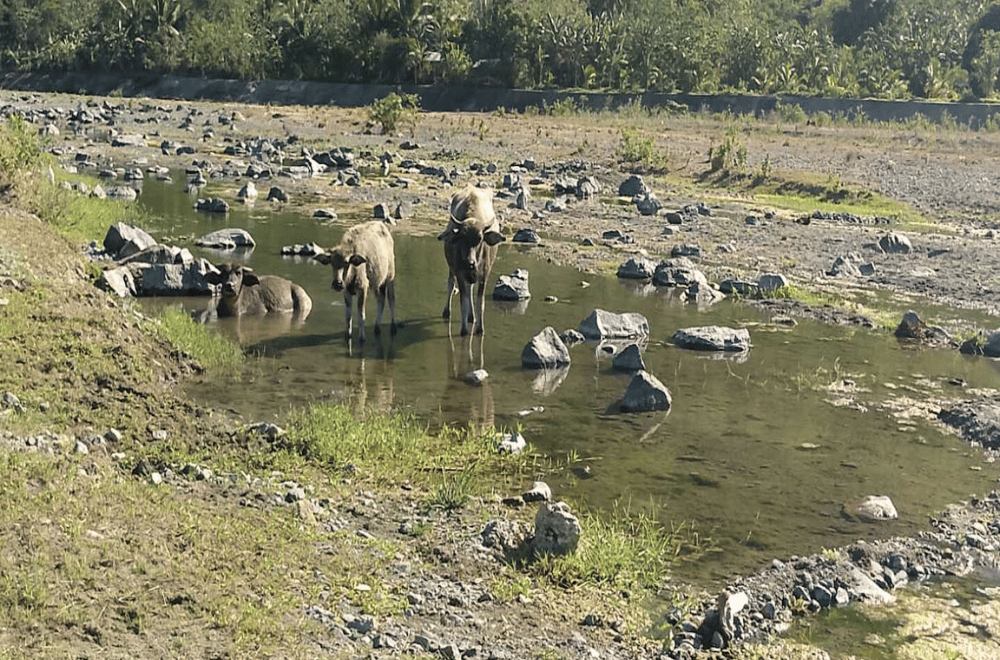The Panganiran River and Panganiran Dam in Pio Duran, Albay are nearly dry with only a few remaining pockets of water, according to the Municipal Disaster Risk Reduction and Management Office (MDRRMO).
Since February 2024, Pio Duran has been under a dry spell status, and a significant decrease in water levels has been observed in both the river and dam.
Noel Ordoña, MDRRMO Head of the Local Government Unit (LGU) Pio Duran, said that the river is their main source of irrigation and water for livestock.
“Ang Panganiran River, ito ang pinaka-source ng aming irrigation system. Ito rin ang pinakamalaking source of water na nakukuha para sa mga livestock. Kasi itong area na ito, maraming livestock, mga gulayan, sa farming, diyan po umaasa ng tubig,” Ordoña said.
According to the Albay Public Safety and Emergency Management Office (APSEMO), Albay has two types of climate: Type 2 and Type 4.
While Type 2 areas receive evenly distributed rainfall throughout the year, Type 4 areas, including the third district from Camalig to Pio Duran, experience more pronounced effects from both dry and wet seasons.
The following areas in Albay are those included in the Type 2 climate:
1st District
Portion of Legazpi City
The following are the areas in Albay under Type 2 and Type 4 climates:
Type 2 climate:
- 1st District
- Portion of Legazpi City
Type 4 climate:
- Camalig
- Guinobatan
- Oas
- Ligao
- Polangui
- Libon
- Jovellar
- Pio Duran
“Ining mga rainfed areas ang affected, tapos ining small stream and creeks, apektado iyan; then ang mga large rivers na apektado ang flow, or pwedeng kung prolonged ang epeko kang dry spell, pwedeng mag-dry up man sinda. Pag sinabi kong dry spell, meaning three months na without rainfall,” Dr. Cedric Daep, Head of APSEMO, said.
APSEMO advised the LGUs to implement water regulation measures through local ordinances to address the water shortages promptly.





